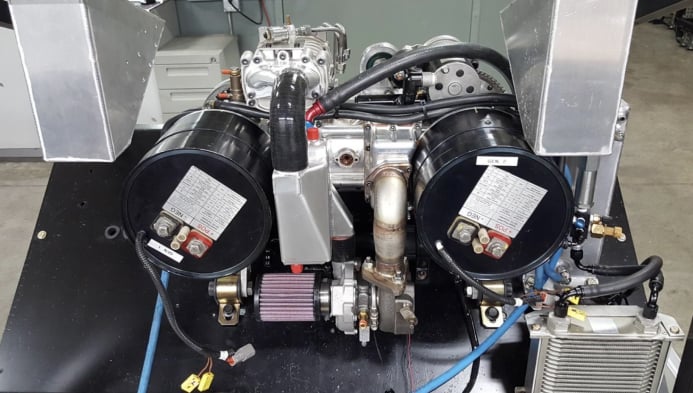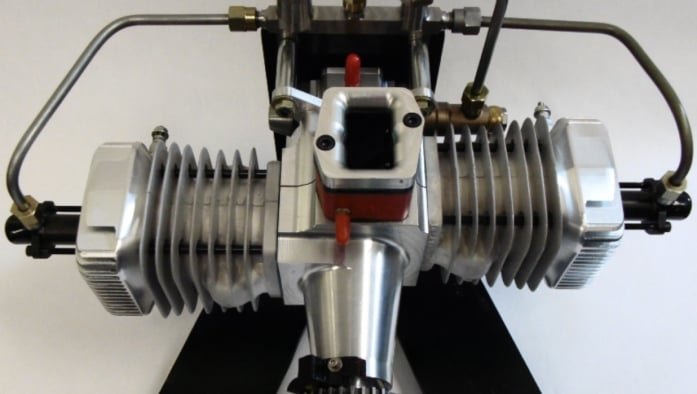
Solution
As part of a Phase II US Army SBIR supported by US Army Tank Automotive Research, Development and Engineering Center (TARDEC), now Ground Vehicle Systems Center (GVSC), Baker Engineering developed our single cylinder opposed piston engine into a complete APU package with integrated support systems including lubrication, induction, controls, and cooling contained within the very compact spaceclaim available for the APU in the front sponson of the Stryker vehicle. This system at .4L total displacement was demonstrated to 12 kw sustained output, ultimately limited by the amount of cooling that could be packaged in the Stryker APU spaceclaim.
The two stroke turbo-supercharged opposed piston diesel engine architecture developed during this effort achieves higher thermal efficiency than a comparable four stroke diesel engine while the unique low profile packaging of the opposed with its multiple power takeoff locations permitting integration of two generators, a fuel pump drive, and an integrated dry sump lubrication system.
The technology developed during this effort continues to be developed with the latest iteration targeting higher output and compact packaging required for APUs installed in vehicles such as the M1 Abrams. Contact Baker Engineering to discuss how our technology could benefit your project or how we can work together to make more power.




